There’s a welcoming committee on the other side of the ornate cast-iron door as a Carabinieri officer surveys the situation. In via dell’Oriuolo, the Florence branch of the Banca d’Italia serves as a stronghold to the country’s central coffers. While vault upon vault must surely sprawl below ground, visitors are very much appreciated and warmly greeted by the Bank of Italy‘s management team, who seek to put people and culture at the centre of its 163-year-old agenda.
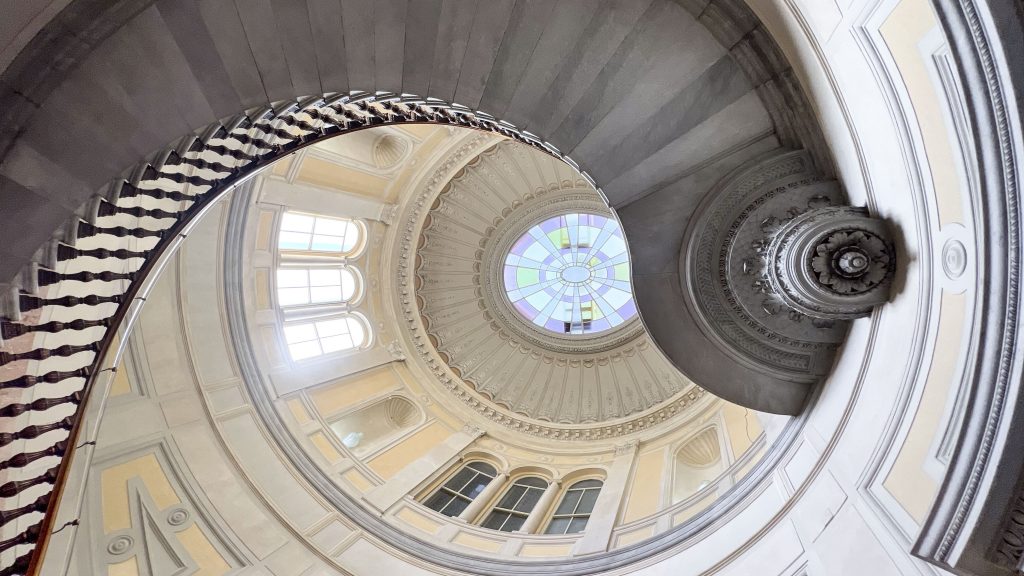
An architectural power play of unity and stability, the impressive atrium reflects the symmetry of the façade with the addition of a Neo-Renaissance coffered ceiling and four pietra serena columns. The scene is dominated by Augusto Rivalta’s sculpture of Camillo Benso di Cavour, the first prime minister of Italy after playing an essential role in the country’s unification and who was equally fundamental in the founding of the national bank. The bank’s representatives take the time to explain how the first headquarters of the Banca Nazionale del Regno d’Italia was the only building to be edified in the city centre during Florence’s years as the capital of Italy between 1865 and 1871. The palazzo was erected on a site once occupied by the Pazzi gardens, which were entered through a gateway marked by the family coat of arms fashioned by Donatello, and which extended from the final section of via dell’Oriuolo to borgo degli Albizi. That same shield is now displayed in the adjacent Donatello Room to the left of the atrium, in addition to a plaque dedicated to the first director general of the bank and a stone marzocco, a symbol of Florentine strength. The room also introduces visitors to the eclectic exhibition Towards Modernity: Women in the Banca d’Italia’s Art Collection.
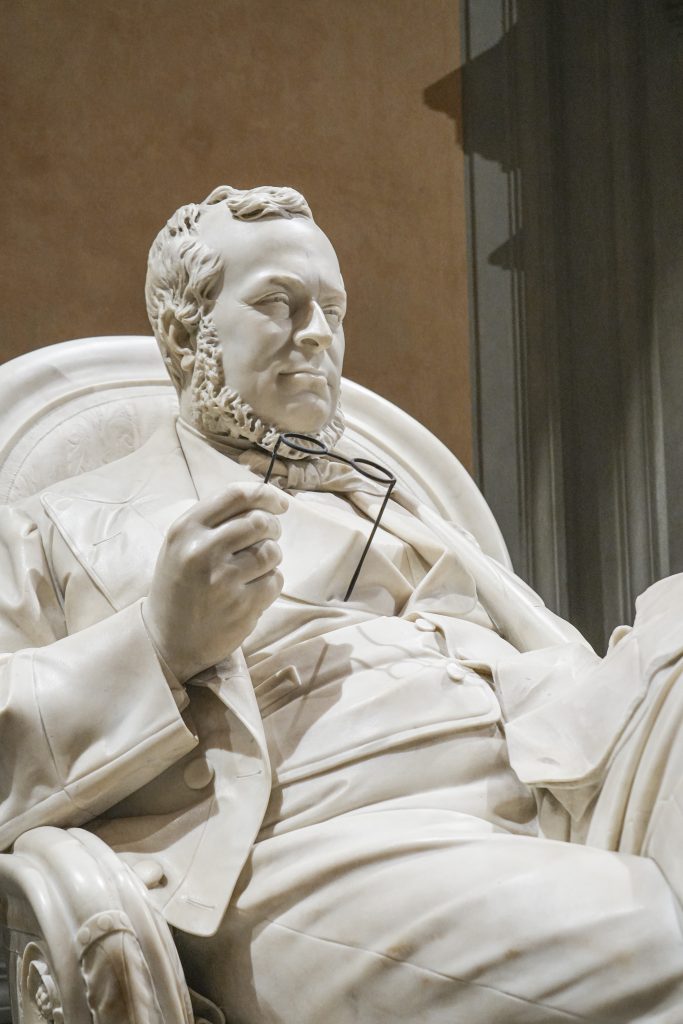
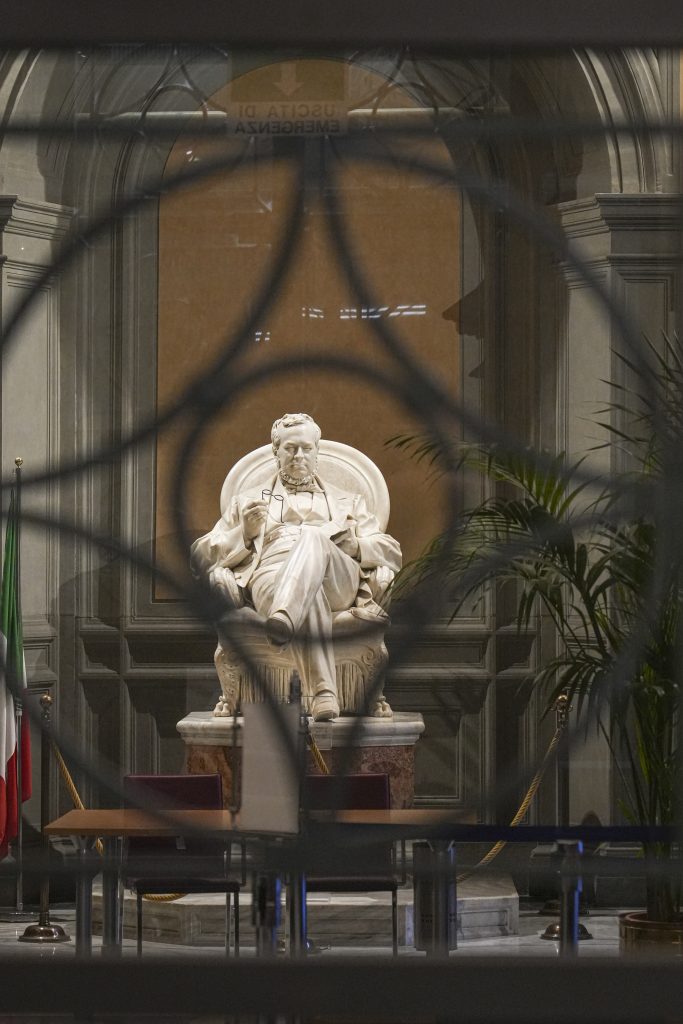
This month’s cover star is next up for discovery. Antonio Cipolla’s grand elliptical staircase seemingly defies gravity, hugging the walls decorated by Girolamo Magnani and mysteriously swirling up to the stained-glass lantern. It’s one of those iconic gems that entices in photographs and delights beyond belief in person. How does it stay up? How did the architect design such a dazzling feat of engineering and beauty? In actual fact, a massive marble base and two pulpit-like corbels placed at the level of the two floors act as a counterweight to the 108 steps. Yellow Siena, green Verde Alpi, grey Bardiglio and red Rosso Mogano marble form the captivating floor at the foot of the staircase, where Polish artist Maryla Lednicka-Szczytt’s pensive Black Angel embodies the dark side of creative genius and finance: the sculptress committed suicide in New York in 1947 after suffering from depression exacerbated by economic strife.
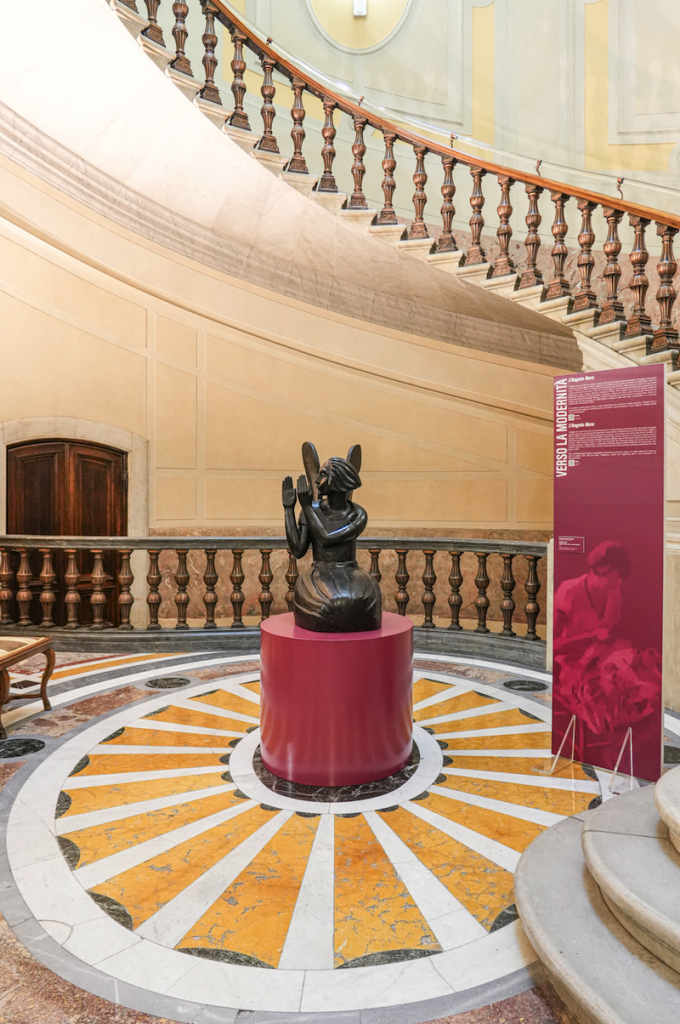
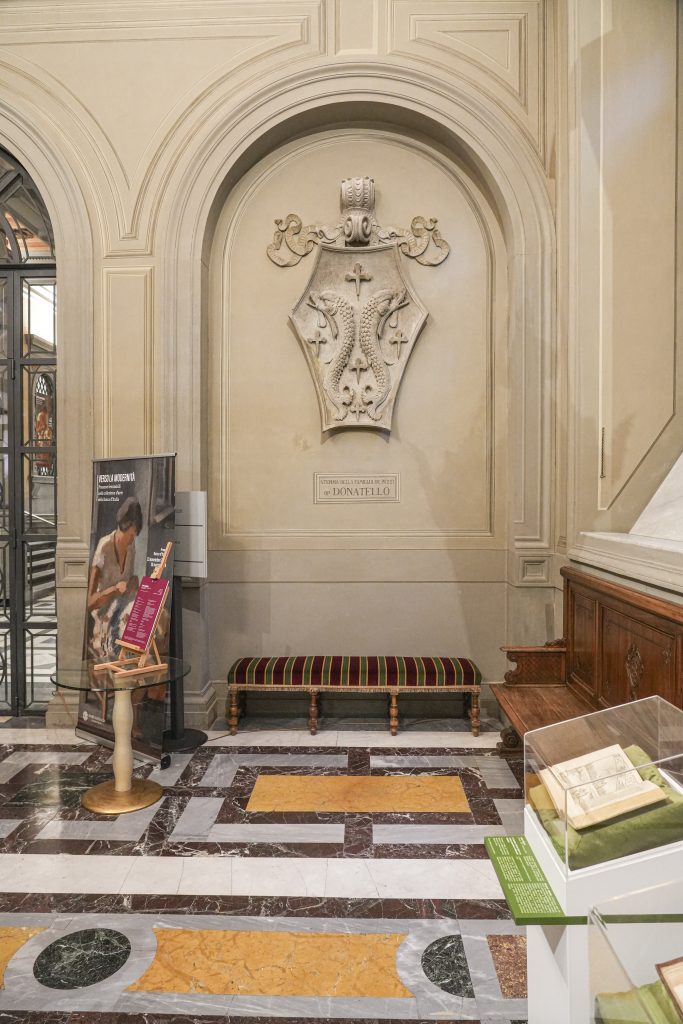
Climbing the stairs to the first of the piano nobile (there are two) is not for the faint-hearted as a dose of Stendhal syndrome bubbles beneath the surface. Shallow steps and the natural sweep do not sit neatly with the overwhelming desire to look all around, but taking our time we cross the threshold into the bank’s refined former management quarters. Here the show focuses on the household environment with touching works by Giovanni Fattori and Silvestro Lega, among others. Impressionist-style en plein air and high society works are displayed in the imposing board room surmounted by a cascading Murano chandelier.
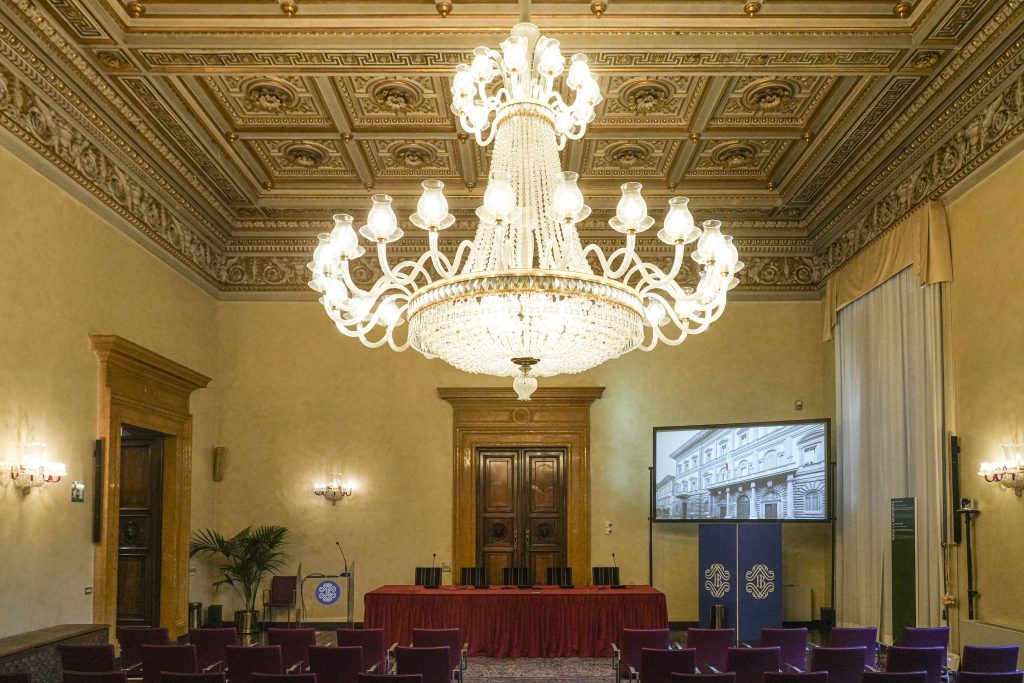
Back up the staircase, taking the time to admire the subtle violet and jade shade of the lantern window, we arrive in the apartments once frequented by the director general with their original parquet floors and frescoed ceilings, where art by Soffici, Picasso and Carlo Levi currently take centre stage. Next door, the elegant Blue Room is graced by Venus on the vault and shows stellar examples of bucolic women’s art by the talented Leonetta Cecchi Pieraccini and Pasquarosa Bertoletti Marcelli, while the reception rooms rock a rococo style with a star-lined floor as Felice Casorati’s mesmerizing Cubist blue nude Clelia stands beside Marisa Mori’s nude study with a Piero della Francesca-like face. While the goddess Flora peers down from the stylized plafond, an early-career white ceramic head with gold accents by Lucio Fontana dazzles on one side and a two-sided work by the Tuscan Nella Marchesini reveals its secrets in a well-positioned mirror.
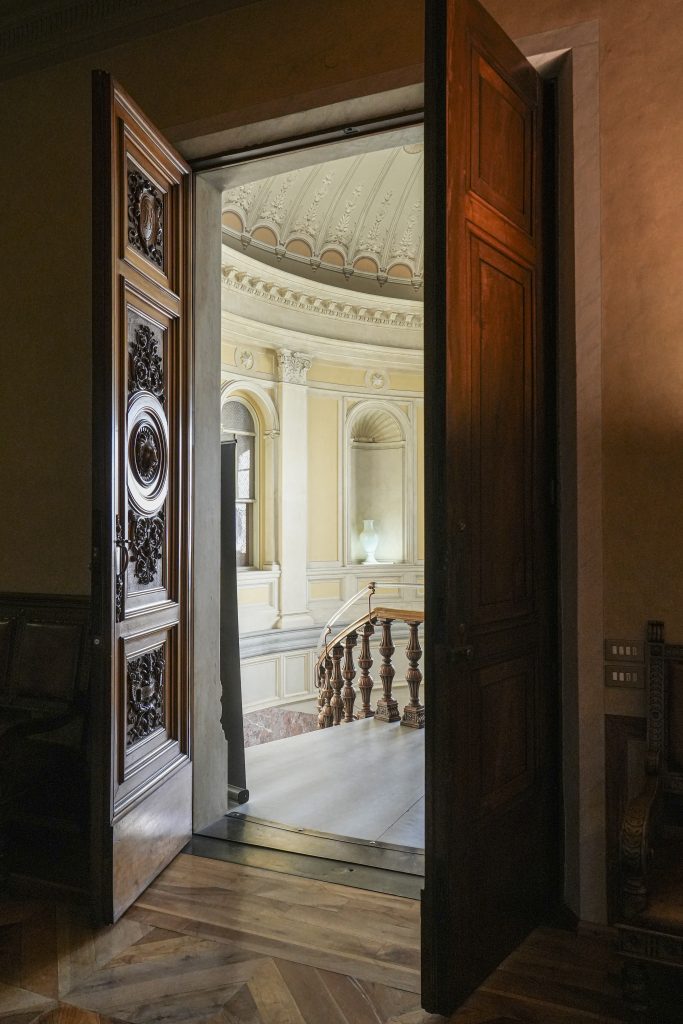
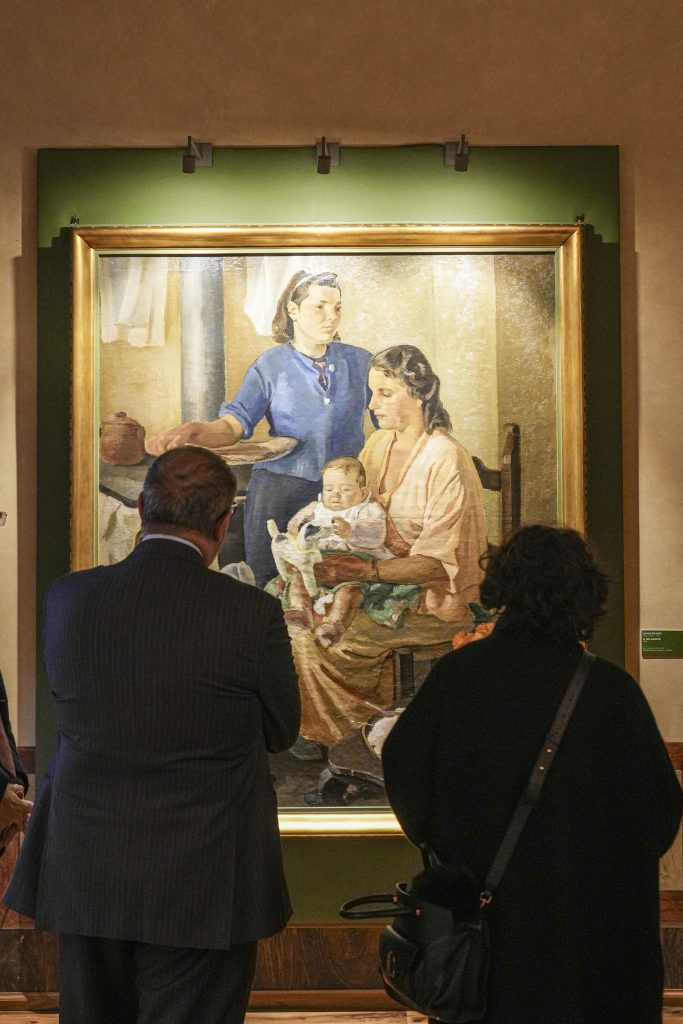
Plenty more confidences, revealed or concealed, are in store at what was once the headquarters of Italy’s national bank. In addition to using the archives, which are available to anyone by appointment, the Florence branch is open to the public from 8.15am to 1.30pm Monday to Friday. Services include cash receipts for the state and payment to the state; issuing and cashing in banknotes as well as replacing damaged euro notes and coins; checking suspected counterfeit banknotes; issuing and paying Bank of Italy cashier’s cheques; free access to one’s own personal data stored in the Interbank Register of Bad Cheques and Payment Cards (CAI) to verify whether a cheque or a payment card has been blocked; and free access to one’s own personal data stored in the Bank of Italy’s Central Credit Register, which collects details from banks and financial companies (intermediaries) about the loans granted and guarantees issued to their customers. People can also submit complaints to the Bank of Italy to report conduct by banks and supervised financial intermediaries that they deem to be irregular or wrong, or irregularities in the information held in the Central Credit Register (CR) or in the Interbank Register of Bad Cheques and Payment Cards (CAI). The Florence branch of the Bank of Italy also handles appeals to the Banking and Financial Ombudsman (ABF), an independent and impartial organization that examines customers’ complaints and quickly decides who is in the right according to the law.
See inside Florence’s Banca d’Italia
See inside Florence’s Banca di Italia with a free private guided tour on February 16 at 11.30am + 12.30pm. In addition to enjoying the current exhibition Towards Modernity: Women in the Banca d’Italia’s Art Collection, you will have the opportunity to climb the iconic staircase, gaze at the art collection and learn more about the bank’s activities.
Exclusive to readers of The Florentine. Click here to join the waiting list.








